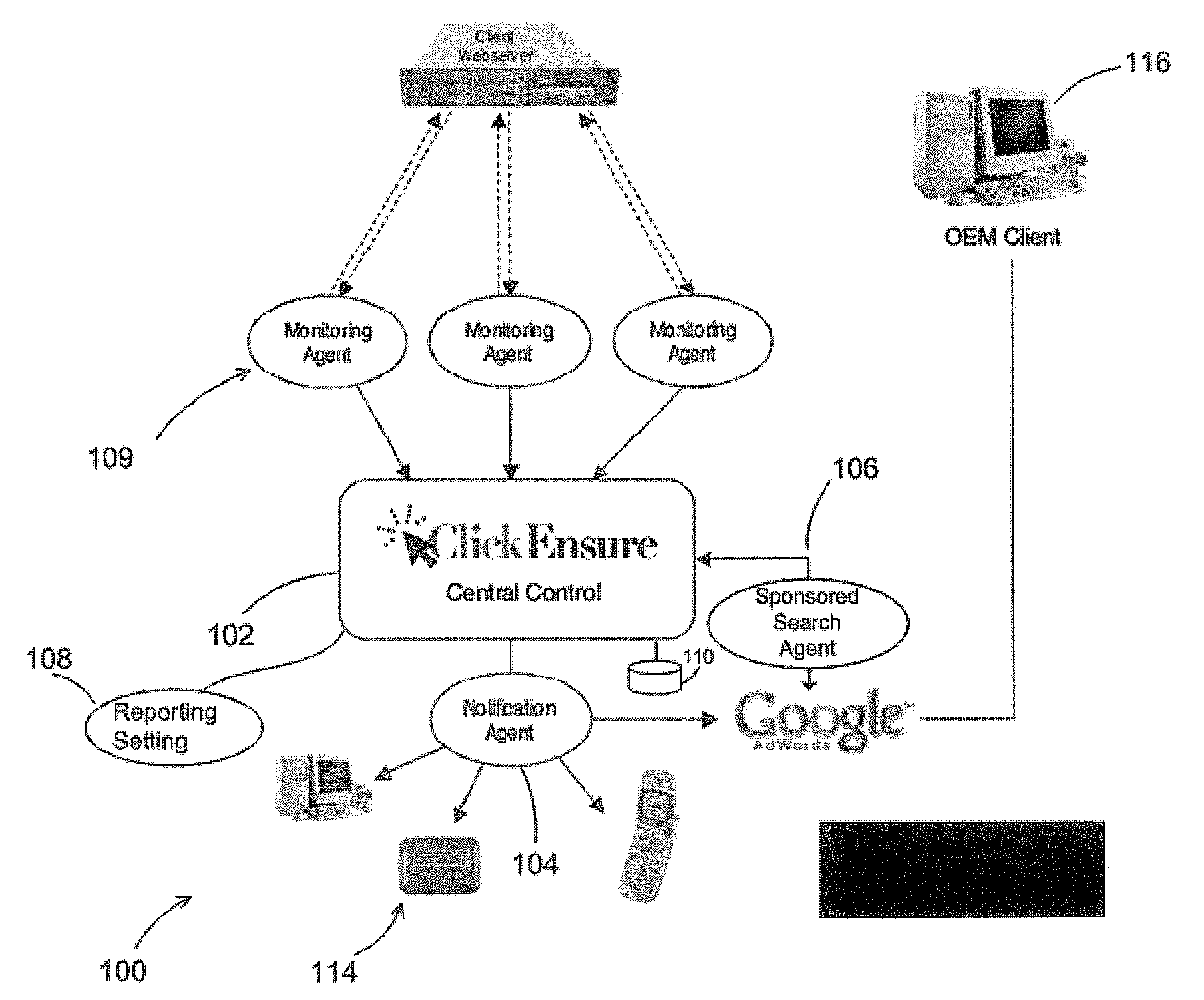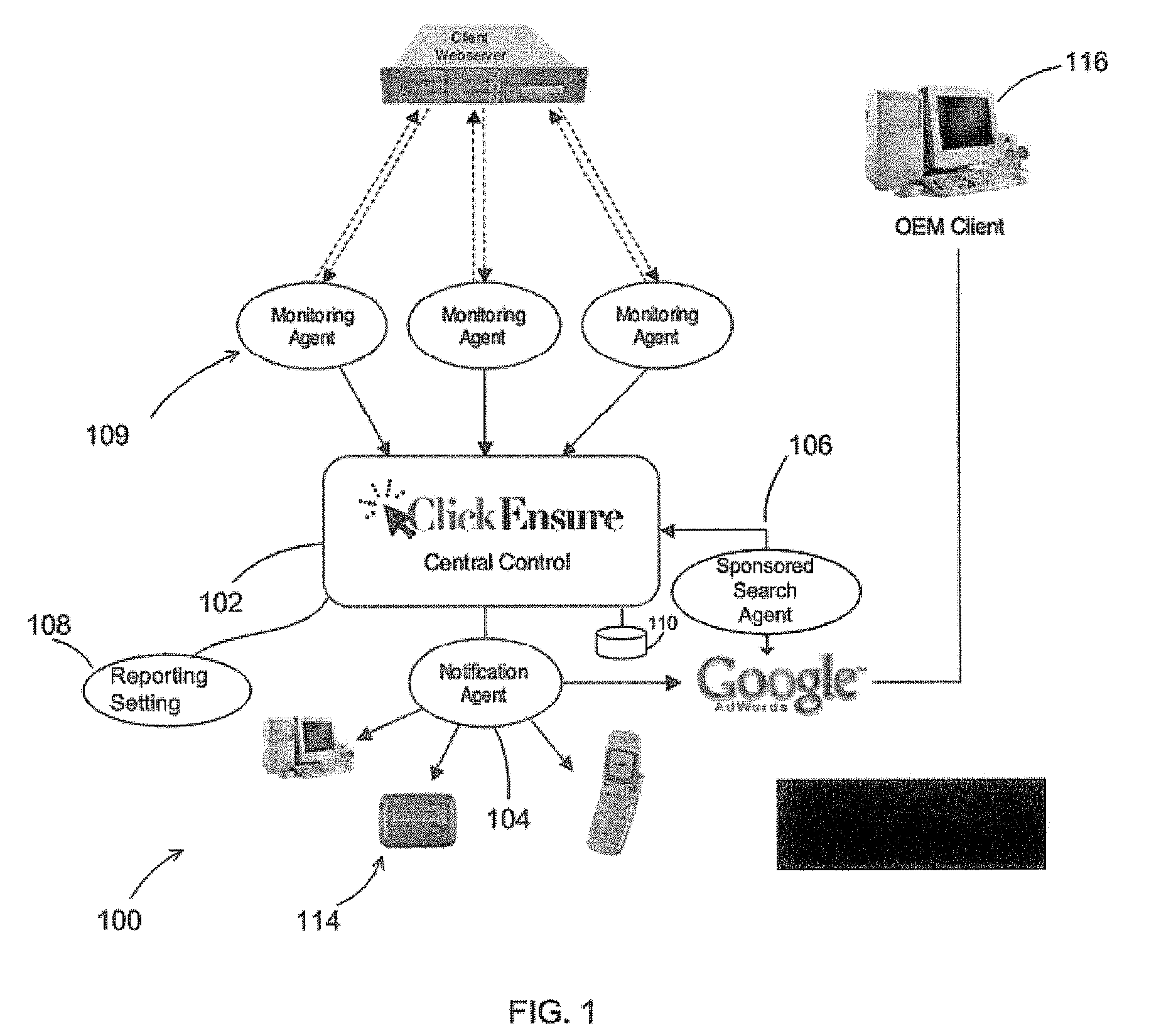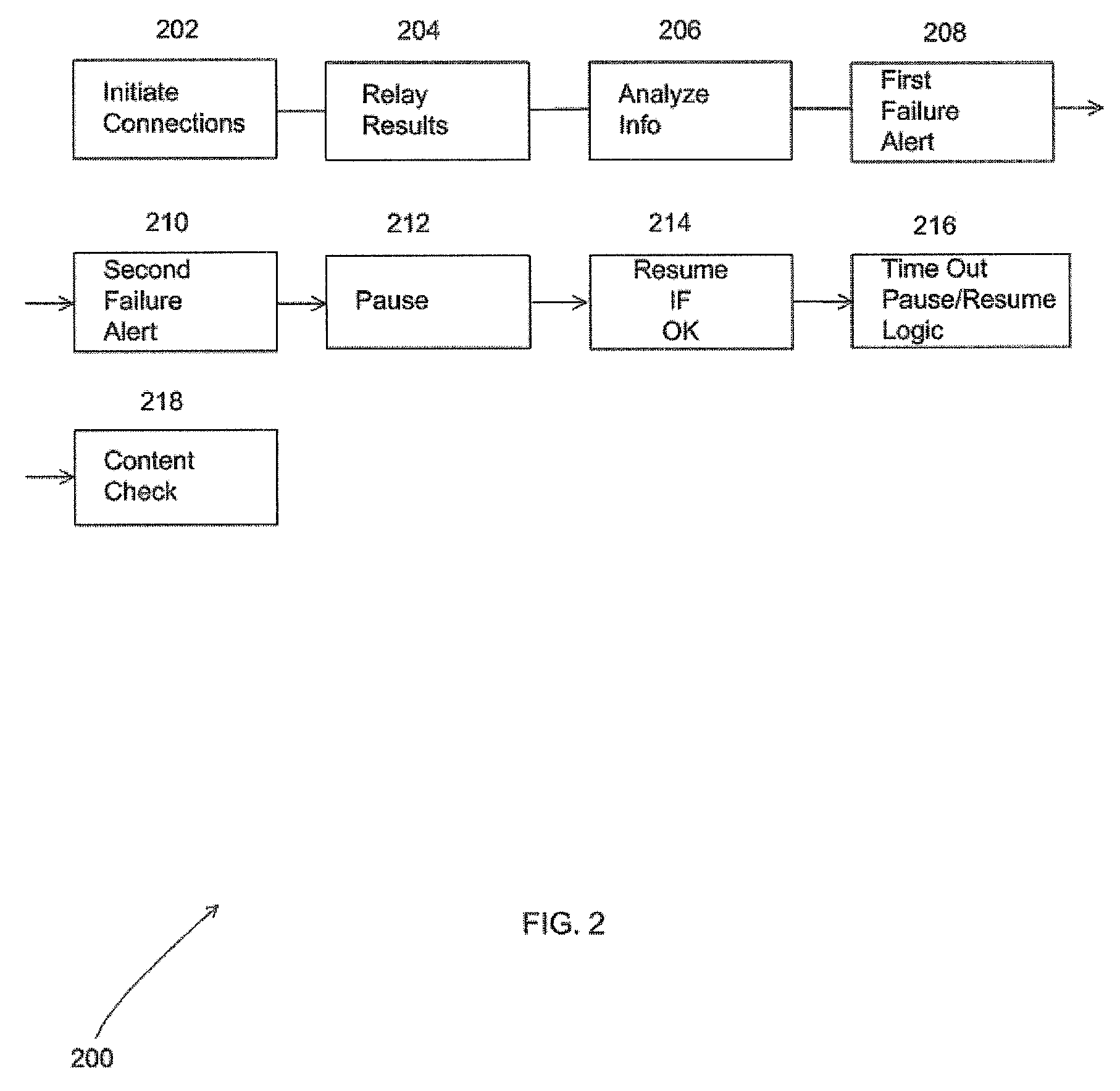System and method for managing internet based sponsored search campaigns
- Summary
- Abstract
- Description
- Claims
- Application Information
AI Technical Summary
Benefits of technology
Problems solved by technology
Method used
Image
Examples
Embodiment Construction
[0028] According to the embodiment(s) of the present invention, various views and / or illustrations are presented in FIG. 1-3 and like reference numerals are being used consistently throughout to refer to like and corresponding parts of the invention for all of the various views and figures of the drawing. Also, please note that the first digit(s) of the reference number for a given item or part of the invention corresponds to the Fig. number in which the item or part is first identified.
[0029] One embodiment of the present invention comprising web-site monitoring functionality and campaign management functionality having automated features for modifying campaigns and allowing the advertiser to avoid potential losses during website outages, teaches a novel system and method for managing Sponsored Search campaigns. The Sponsored Search Campaign Management Tool (SSCMT) can utilize three pieces of information in its function, including the URL of the advertiser's website that is to be ...
PUM
 Login to View More
Login to View More Abstract
Description
Claims
Application Information
 Login to View More
Login to View More - R&D
- Intellectual Property
- Life Sciences
- Materials
- Tech Scout
- Unparalleled Data Quality
- Higher Quality Content
- 60% Fewer Hallucinations
Browse by: Latest US Patents, China's latest patents, Technical Efficacy Thesaurus, Application Domain, Technology Topic, Popular Technical Reports.
© 2025 PatSnap. All rights reserved.Legal|Privacy policy|Modern Slavery Act Transparency Statement|Sitemap|About US| Contact US: help@patsnap.com



